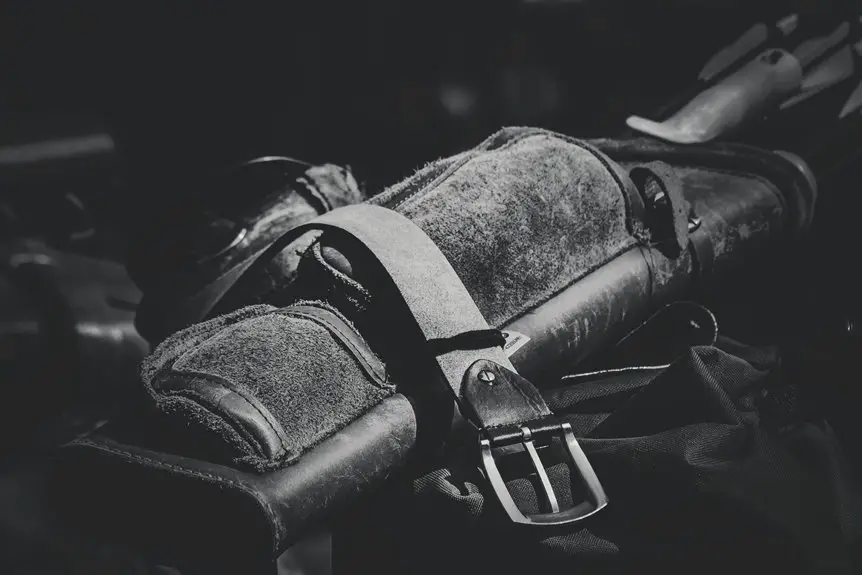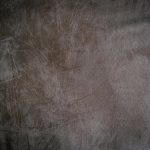Brushed suede is regular suede that’s been carefully cleaned and then gently brushed to raise its fibers, giving it a softer, smoother texture and a polished look. You’ll notice it feels more velvety and has a uniform nap compared to the slightly rougher, matte finish of regular suede. Both need special care to stay looking great, but brushed suede offers a more refined appearance and subtle sheen. Stick around to explore how these differences affect durability, uses, and maintenance.
Table of Contents
Key Takeaways
- Brushed suede is regular suede with fibers raised through specialized brushing for a softer, smoother texture and more uniform nap.
- It has a sleek, polished look with dynamic shading, unlike regular suede’s matte, fuzzy surface.
- Brushed suede feels softer and offers a more luxurious, velvety touch compared to the firmer feel of regular suede.
- Both types are porous and prone to stains, but brushed suede is slightly more resistant to dirt due to its uniform texture.
- Brushed suede is commonly used in high-end fashion and upholstery, while regular suede suits casual footwear and durable outerwear.
Understanding the Basics of Suede
Suede is a type of leather known for its soft, napped finish, created by sanding the inner surface of animal hides. When you touch suede, you’ll notice its velvety texture, which comes from the fine fibers raised during the sanding process.
Unlike smooth leather, suede feels more delicate and flexible, making it popular for clothing, shoes, and accessories. However, you should know that suede is more prone to staining and water damage because of its porous surface.
It’s also less durable than full-grain leather, so you’ll want to handle it with care. Understanding these basic characteristics helps you appreciate why suede items require special maintenance and why they offer a distinct look and feel compared to other types of leather.
The Process of Creating Brushed Suede
To create brushed suede, you first prepare the suede surface by carefully cleaning and conditioning it.
Then, you use specialized brushing techniques to raise the fibers and give the material its soft, textured feel.
Understanding these steps helps you appreciate the difference between brushed suede and regular suede.
Suede Surface Preparation
Although it may seem straightforward, preparing the surface of suede for brushing involves careful steps to ascertain the material develops the desired texture and softness. First, the suede must be cleaned to remove dirt and oils that can interfere with brushing. Next, the surface is lightly moistened to relax the fibers, making them easier to lift. Finally, the suede is inspected to ascertain uniformity before brushing begins.
| Step | Purpose | Key Tip |
|---|---|---|
| Cleaning | Remove dirt and oils | Use a gentle suede brush |
| Moistening | Loosen fibers | Apply water sparingly |
| Inspection | Ascertain even texture | Check under good lighting |
Following these steps sets the foundation for a soft, well-textured brushed suede finish.
Brushing Techniques Explained
Once the suede surface is prepped and inspected, you can begin brushing to bring out its signature texture. Use a soft-bristled suede brush, moving it gently in one direction to lift the nap and create that velvety finish.
Avoid harsh scrubbing, which can damage the fibers. For stubborn spots, a crepe rubber eraser helps restore smoothness without roughening the surface. You might also try a fine metal brush for tougher suede, but be careful to keep strokes light and even.
Brushing not only improves appearance but also enhances softness and durability. Regular brushing keeps your suede looking fresh, preventing dirt buildup and maintaining that rich, plush feel distinctive to brushed suede.
Texture and Appearance Differences
You’ll notice that brushed suede feels softer and smoother compared to regular suede’s slightly rougher texture.
Visually, brushed suede has a more uniform nap, giving it a sleek, polished look.
Let’s explore how these differences affect both touch and appearance.
Surface Feel Comparison
Texture plays an essential role when comparing brushed suede to regular suede, as you’ll immediately notice distinct differences under your fingertips.
Brushed suede feels softer and smoother because the fibers are carefully raised and aligned during the brushing process. This gives it a velvety, almost plush sensation that invites touch.
Regular suede, on the other hand, retains a natural nap that’s more rugged and slightly coarse, offering a firmer grip.
When you run your hand over brushed suede, the surface feels consistently even, while regular suede might feel a bit uneven due to its more unrefined texture.
These tactile differences affect how each type responds to wear and handling, shaping your overall experience with the material in practical and aesthetic ways.
Visual Texture Variations
Although both brushed suede and regular suede share the same base material, their visual textures differ noticeably.
When you look at regular suede, you’ll notice a soft, matte finish with a slightly fuzzy surface that absorbs light evenly, giving it a more uniform appearance.
Brushed suede, on the other hand, has a distinct nap created by brushing the fibers in one direction. This process creates subtle variations in shading and sheen, making the surface appear more dynamic and reflective.
You’ll see light and dark areas depending on the angle you view it from, adding depth and richness.
These visual texture variations not only affect the look but can influence how you style and maintain each type of suede.
Durability and Maintenance Considerations
Since suede is known for its delicate nature, understanding how brushed suede compares to regular suede in terms of durability and maintenance can help you choose the right material for your needs.
Brushed suede typically has a more uniform nap, which can make it slightly more resistant to dirt and wear than regular suede. However, both types remain sensitive to moisture and stains, so you’ll need to treat them with a protective spray and avoid getting them wet.
Brushed suede’s uniform nap offers better resistance to dirt, but both types need protection from moisture and stains.
When cleaning, use a soft brush specifically designed for suede to lift dirt gently without damaging the fibers.
Keep in mind that regular suede may show scuffs more easily, but it can often be restored by light brushing.
Either way, regular upkeep is essential to maintain their appearance and longevity.
Common Uses for Brushed Suede vs. Regular Suede
Anyone considering suede for their wardrobe or home will find that brushed suede and regular suede each suit different purposes.
Brushed suede offers a softer, more refined texture, making it perfect for items where comfort and style matter most. Regular suede, with its natural, slightly rougher finish, works well in more rugged or casual settings.
Here are three common uses for each:
- Brushed Suede: luxury jackets, high-end handbags, premium upholstery
- Regular Suede: casual footwear, work gloves, durable outerwear
- Versatility: Brushed suede often appears in fashion-forward pieces, while regular suede is popular in everyday, functional items
Knowing these typical uses helps you pick the right type for your specific needs.
Choosing Between Brushed and Regular Suede for Your Needs
How do you decide whether brushed suede or regular suede fits your needs best? Start by considering the look and feel you want.
Brushed suede offers a softer, more velvety texture with a subtle sheen, making it ideal if you prefer a refined appearance. Regular suede has a more natural, matte finish and a slightly rougher feel, which works well for a classic, rugged style.
Next, think about durability and maintenance. Brushed suede can be a bit more delicate and may require gentle care, while regular suede tends to handle wear better but can attract stains easily.
Finally, match your choice to the item’s purpose—brushed suede suits dressier items, whereas regular suede fits casual, everyday wear. Choose what aligns with your style and lifestyle.
Frequently Asked Questions
Can Brushed Suede Be Waterproofed Effectively?
Waterproofing brushed suede is like putting a raincoat on delicate fabric; you can protect it, but it still needs gentle care. Use a specialized spray, apply evenly, and avoid soaking to keep it effective and soft.
Is Brushed Suede More Expensive Than Regular Suede?
You’ll usually find brushed suede costs a bit more than regular suede because of its extra processing. However, prices vary depending on the brand and quality, so it’s wise to compare before you buy.
Are There Environmental Concerns With Producing Brushed Suede?
You might think brushed suede’s production is eco-friendly, but it isn’t entirely. The process involves chemical treatments and water use, which can harm the environment. Still, choosing sustainably sourced leather helps reduce your impact.
Can Brushed Suede Be Machine Washed or Dry Cleaned?
You shouldn’t machine wash brushed suede because it can damage the texture. Instead, dry clean it using professionals who specialize in suede, or spot clean gently with a suede brush and mild cleaner to maintain its look.
Does Brushed Suede Come in Synthetic Versions?
Yes, you can find synthetic brushed suede versions. They mimic the texture and look of real brushed suede but are often more affordable and easier to care for, making them a great option if you want durability and style.
- Does Chiffon Fabric Stink - July 15, 2025
- Does Chiffon Fabric Affect the Economy - July 15, 2025
- Does Cotton Fabric Have a Nap - July 15, 2025






